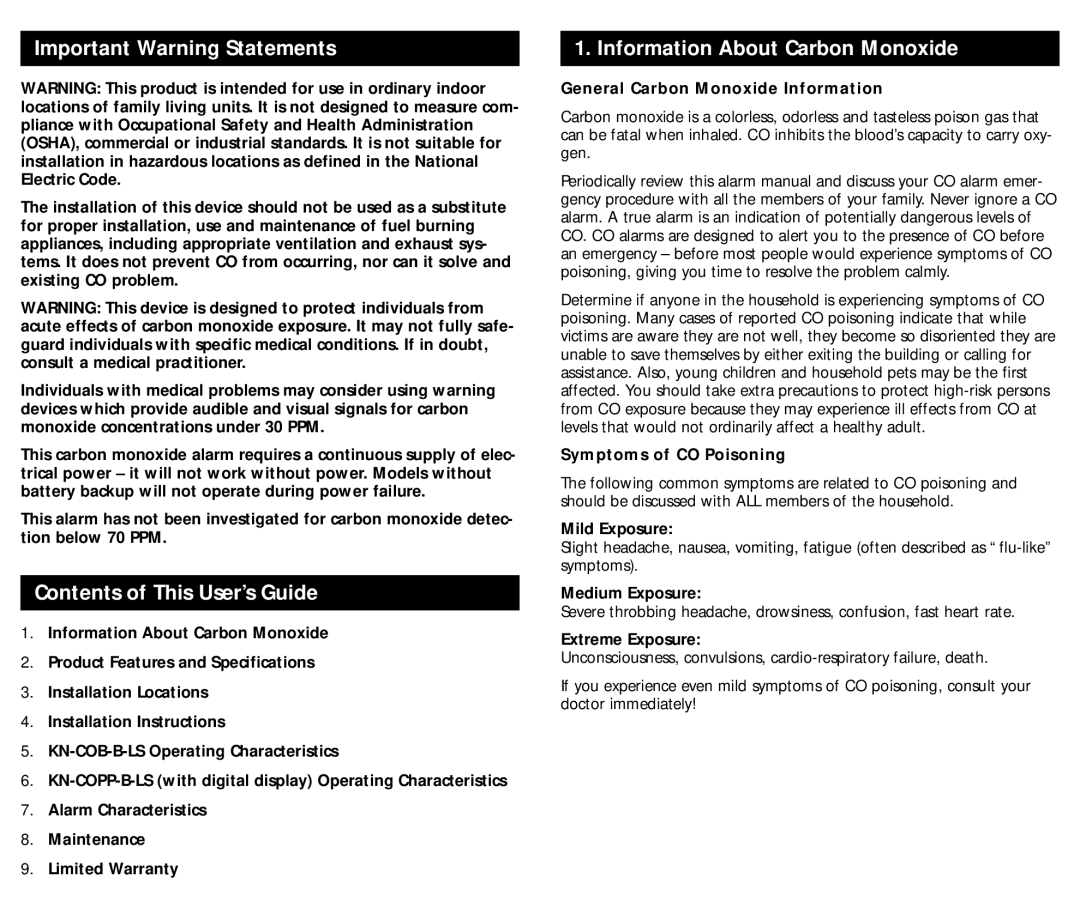KN-COPP-B-LS (900-0230), KN-COB-B-LS (900-0233) specifications
The Kidde KN-COB-B-LS (model 900-0233) and KN-COPP-B-LS (model 900-0230) are state-of-the-art devices designed for enhanced safety in homes and workplaces through advanced carbon monoxide (CO) and smoke detection. These two models exemplify Kidde’s commitment to providing reliable protection against potentially life-threatening situations.The Kidde KN-COB-B-LS features an electrochemical carbon monoxide sensor, which provides accurate detection of even the smallest concentrations of CO. This model typically has a digital display that continuously shows CO levels in parts per million, allowing users to monitor levels in real-time. It is equipped with a voice alarm that offers clear and concise warnings when CO is detected. Additionally, the KN-COB-B-LS has a peak level memory feature that records the highest CO level detected, which is useful for understanding exposure over time.
On the other hand, the KN-COPP-B-LS is a combined smoke and carbon monoxide alarm, integrating dual-sensor technology for comprehensive monitoring. This unit utilizes both photoelectric and ionization sensing technologies. The photoelectric sensor is particularly effective at detecting smoldering fires, while the ionization sensor is better suited for fast flaming fires. This combination increases the effectiveness of fire detection, giving users an earlier warning in emergency situations. Similar to the KN-COB-B-LS, the KN-COPP-B-LS also features a digital display for CO levels and a voice alert system for immediate notifications.
Both devices are easy to install and come with a battery backup to ensure uninterrupted operation during power outages. They feature a test/reset button that allows users to verify functionality and a low battery warning system that alerts users when it's time to replace the batteries. The compact design and modern aesthetics of both alarms ensure they blend seamlessly into any environment.
Furthermore, these models comply with the latest safety standards, providing reassurance to homeowners and businesses alike. With an impressive lifespan of up to 10 years, these Kidde alarms are not only durable but also provide long-term protection against the dangers of smoke and carbon monoxide. Investing in the Kidde KN-COB-B-LS and KN-COPP-B-LS is a proactive step toward ensuring safety and peace of mind for you and your loved ones.

